Unlike solitary wild rabbits (e.g., the American cottontail), most meat rabbit breeds (including New Zealand, Californian, Flemish Giant, Standard Rex, Chinchilla and others) naturally thrive in colonies.
We breed New Zealand rabbits on our homestead to feed ourselves and our German Shepherd, and in this article, we’ll outline the pros and cons of raising rabbits in a colony vs. rabbit cages.
If you don’t have time to read the entire article, here’s a brief overview:
| Pros | Cons |
| A colony setup mimics the rabbits’ natural environment. | Catching rabbits can be a challenge. |
| You may be able to repurpose an existing structure to set up your colony. | Record keeping is more difficult (if you let them burrow). |
| Makes daily chores (feeding) less time-consuming. | No control over breeding. |
| No need for nesting boxes (if you let them burrow). | Little disease control. |
| Better temperature control (if you let them burrow). | Keeping the rabbit pen clean could be a challenge. |
| Better immunity through socialization. | More muscle tone leads to tougher meat. |
| More room for exercise leads to more flavorful meat. | |
| No extra effort is involved in breeding your does. |
This article will talk mostly about the various considerations you should think about when decided whether to utilize a colony structure. If you’re looking for specific guidance, check out our article on how we raise colony rabbits, from birth to butchering.
Advantages of Raising Meat Rabbits In a Colony
We try to raise animals in a way that mimics their natural environment, improves soil quality (if applicable), and keeps chores to a minimum. Those are some of the key reasons we chose to utilize a colony.
Mimics the Natural Environment
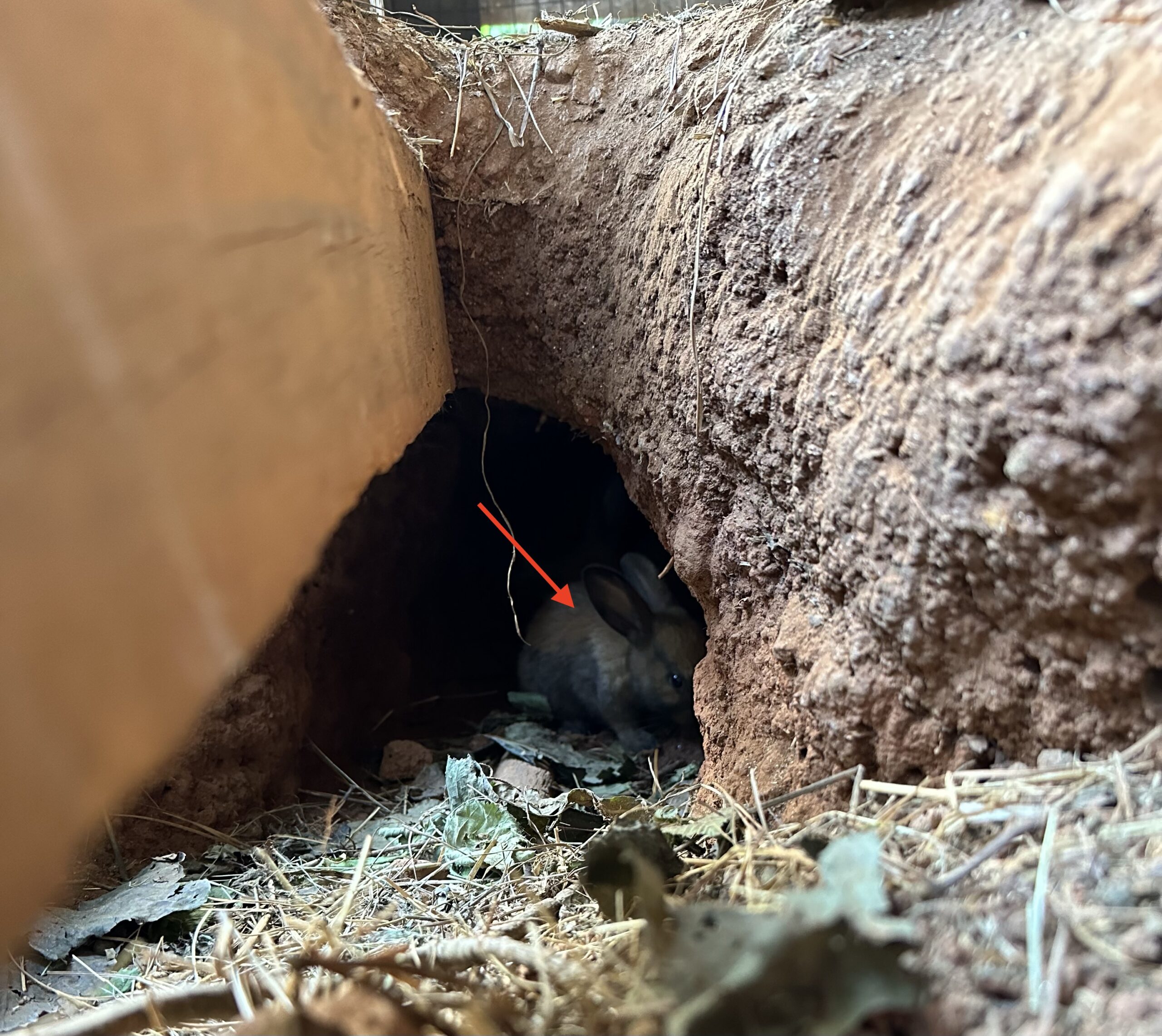
The New Zealand rabbits we breed are unlike domestic rabbits (e.g., the American cottontail rabbit) in that they thrive in a colony setup. We firmly believe that by providing them with an environment that mimics their natural habitat, we breed happier and healthier rabbits that will taste better when the time comes.
Infrastructure
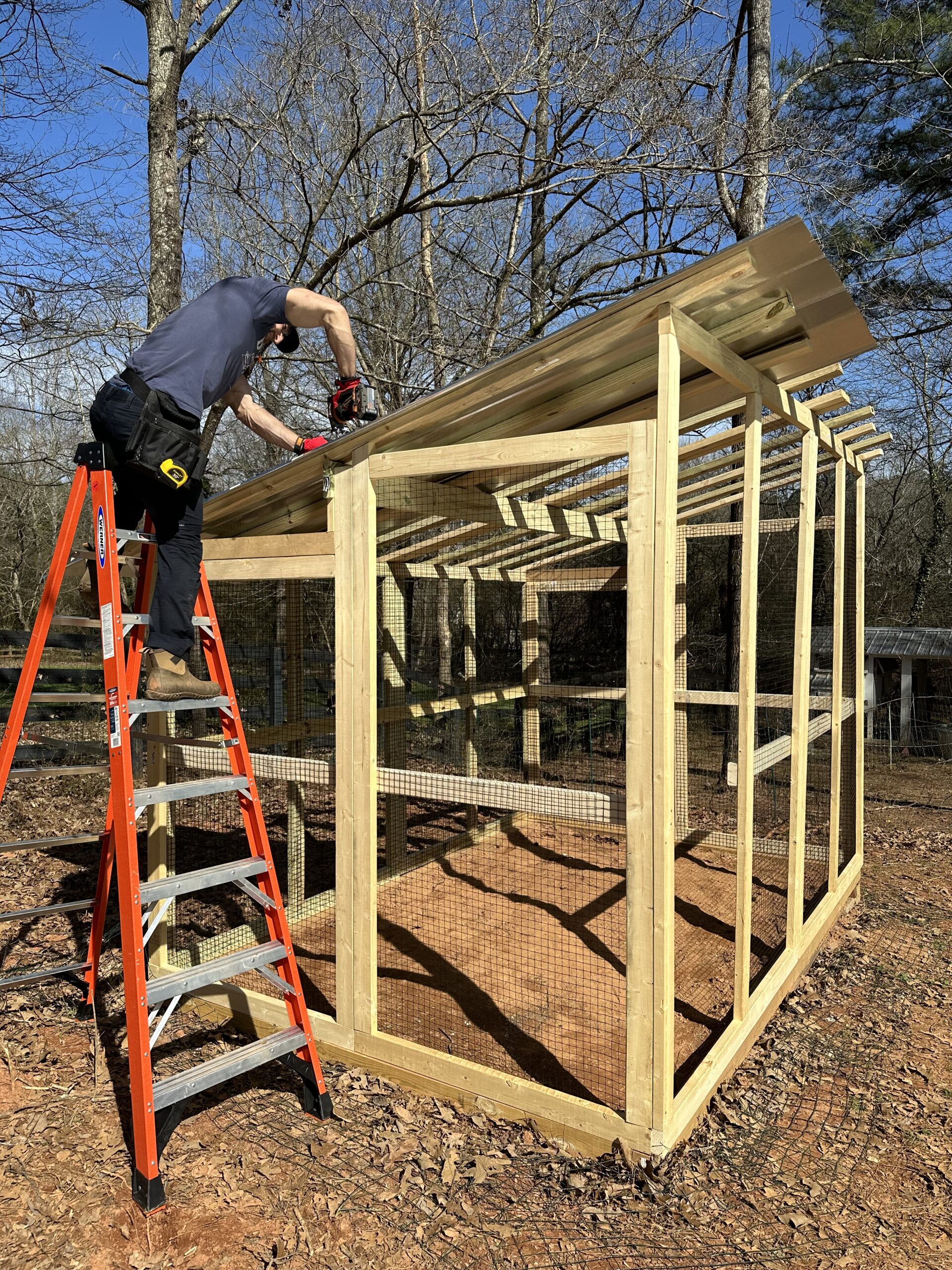
Instead of buying metal cages or building them yourself using mesh or chicken wire, you might already have an old shed or chicken coop you could convert into a rabbit hutch. If so, you can lower your initial investment. We didn’t have any infrastructure to repurpose, so we built a rabbit hutch from scratch.
Daily Chores
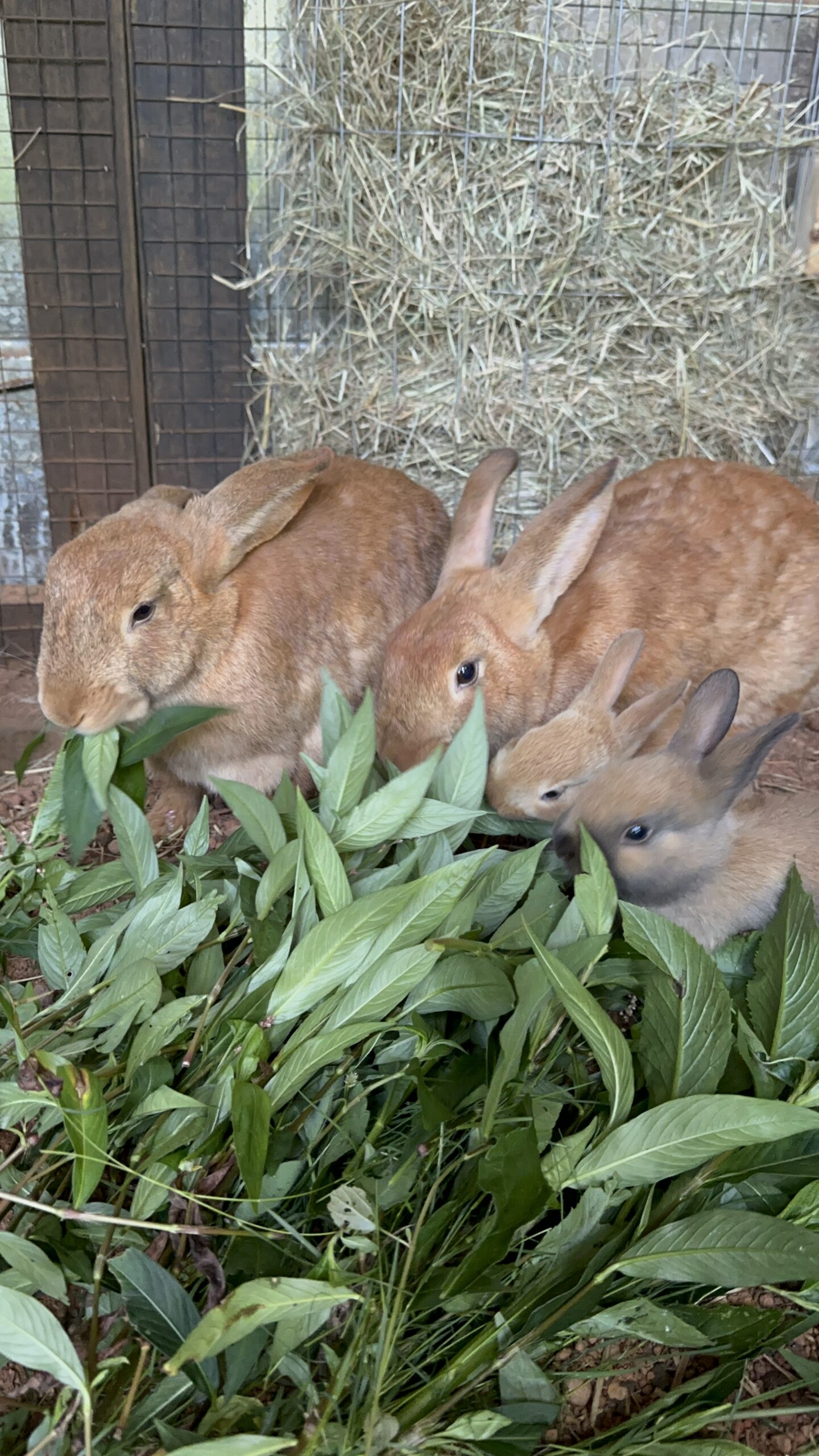
Since all our breeding rabbits (and their kits, before we move them to a mobile rabbit tractor) are in one place, feeding them in the morning and checking on the water is quicker than performing the same chores for individual cages.
Depending on the size of your homestead and the number of animals you have, chores can add up. That’s why we always try to optimize our workflows and minimize our daily chores.
Burrowing
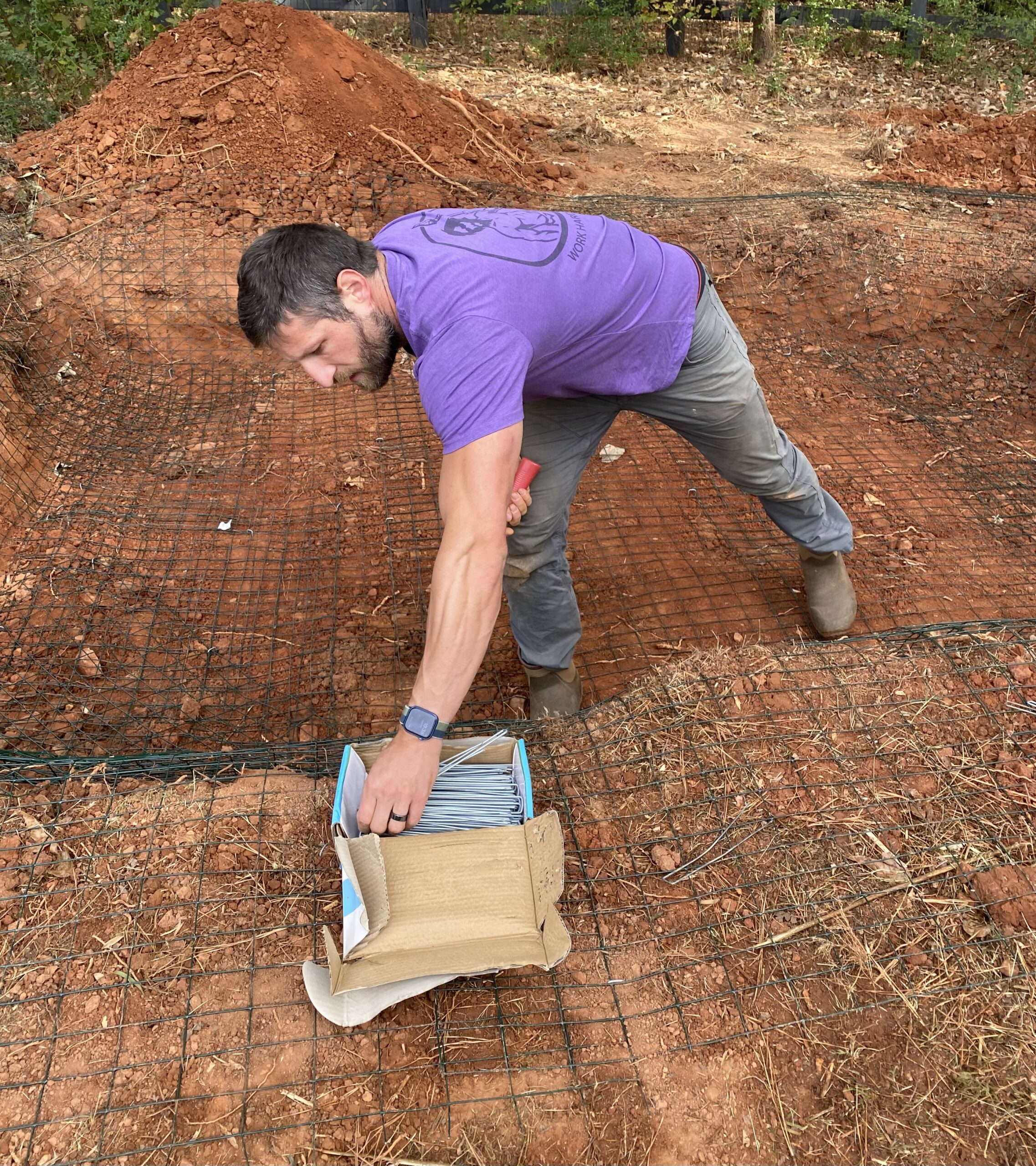
If you allow your rabbits to burrow (a natural behavior), you don’t have to worry about extreme temperatures because the temperature underground (compared to the air temperature) is consistently lower in summer and warmer in winter. In other words, rabbits with access to burrows can self-regulate their body temperature without the need for fans in summer.
Burrowing also eliminates the need for nesting boxes, because the rabbits will build nests underground using their fur and any hay or straw you give them. It took our rabbits a while to start digging, and we feared they wouldn’t have a place to give birth. So we built nesting boxes for them, as you can see in this short video.
However, shortly after we built the nesting boxes, they started digging tunnels, giving birth to the first litter underground.
If you don’t allow them to burrow, you should provide nesting boxes (ideally made from non-toxic materials such as wood). Rabbits tend to chew on everything, including the plastic totes many homesteaders use.
Immunity
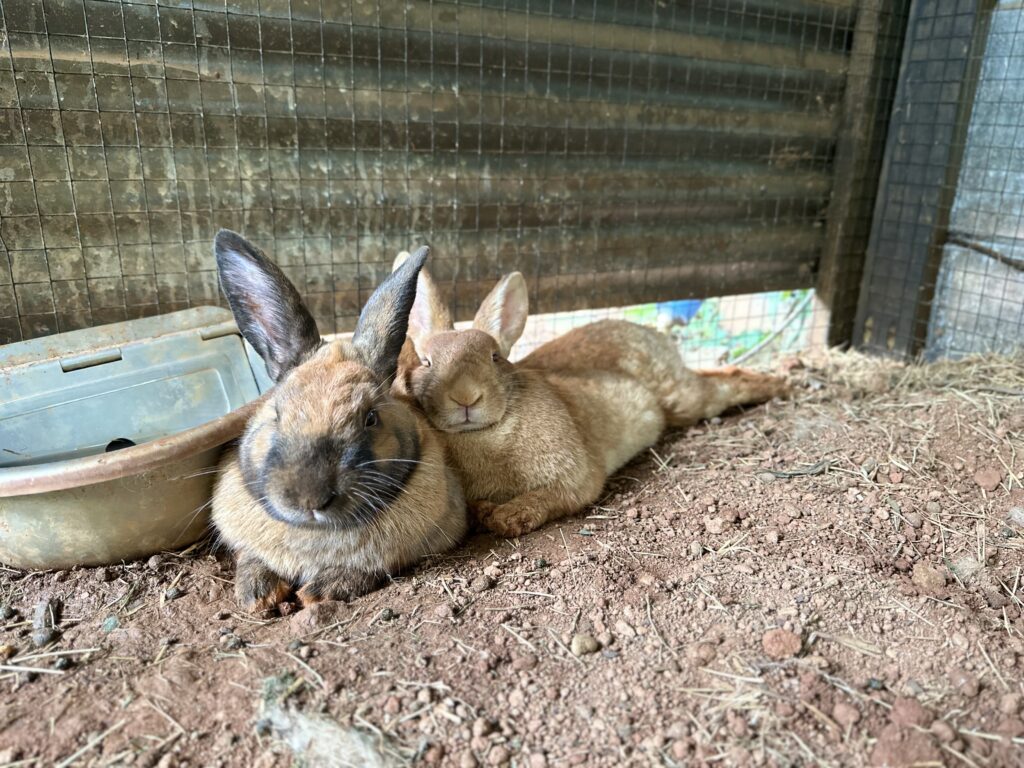
Allowing rabbits to socialize helps support their immune system, similar to how human children benefit from being exposed to other kids’ germs.
Meat Flavor

We’ve noticed an inverse correlation between flavor and tenderness in muscle meat. In other words, the more an animal uses a particular muscle, the more flavorful but chewier the meat is. The less a muscle is used, the less flavorful but more tender the meat is.
That’s particularly true for animals like rabbits that don’t accumulate much fat in their muscle tissue.
The advantage of a colony setting is that your rabbits will likely get more exercise than their caged cousins. That can lead to more flavorful but tougher meat – especially in older rabbits.
Breeding and Kindling
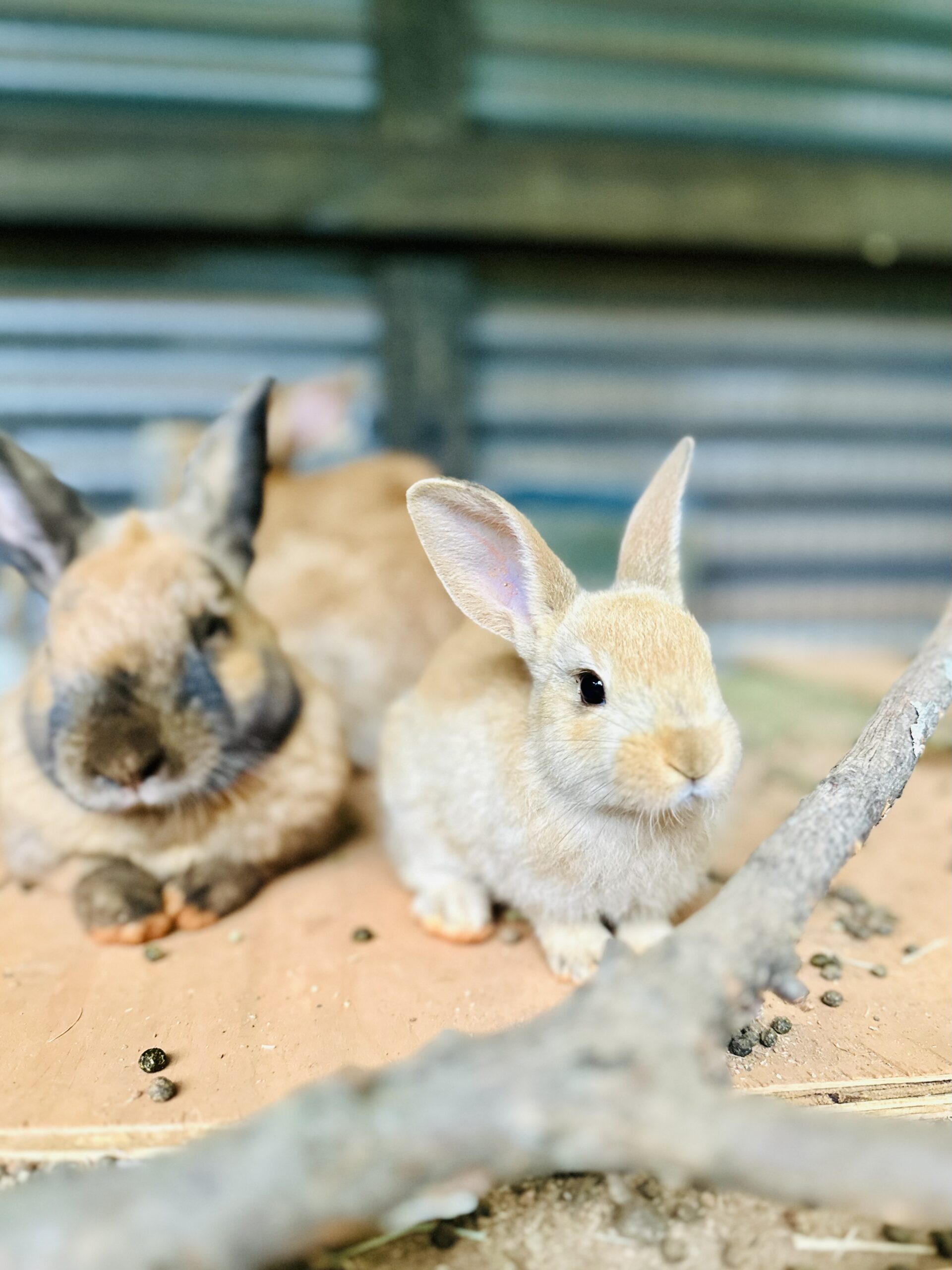
In a traditional rabbitry, bucks and does are separated until you decide it’s time for them to breed. That requires recordkeeping and takes more time.
We decided to raise colony rabbits in part because we didn’t want to have to be involved in the breeding process.
In other words, we allow our rabbits to breed whenever they want. It’s a more hands-off approach that takes no extra time on our end.
Disadvantages of Raising Meat Rabbits In a Colony
Of course, some of the pros listed above also have disadvantages, depending on your homesteading style and breeding goals.
Breeding Performance and Recordkeeping
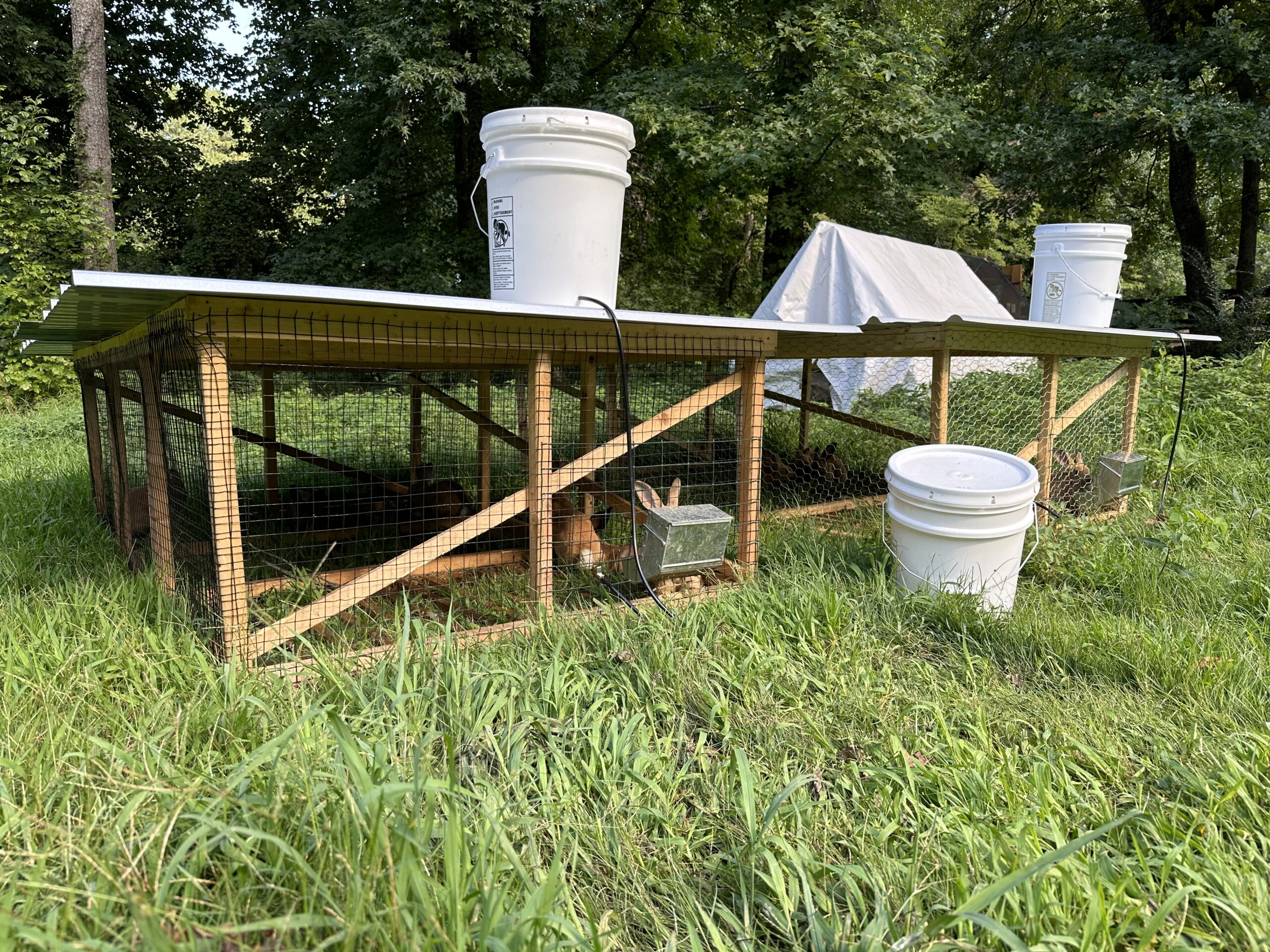
If your goal is to keep track of your litter to improve the genetics of your rabbits over time (or because you want to sell them), a colony setup might not be for you because it’s almost impossible to know when a doe was bred and when she gave birth.
The latter is particularly true if you allow your rabbits to burrow, because you don’t see what’s happening underground.
We usually see a new litter when the baby bunnies are two to three weeks old and they come to the surface for the first time. Then it takes some observation and guessing about who the litter belongs to (so we can keep track of her performance over time). Once we see what mamma the kits are nursing from, we know who they belong to.
Catching Rabbits
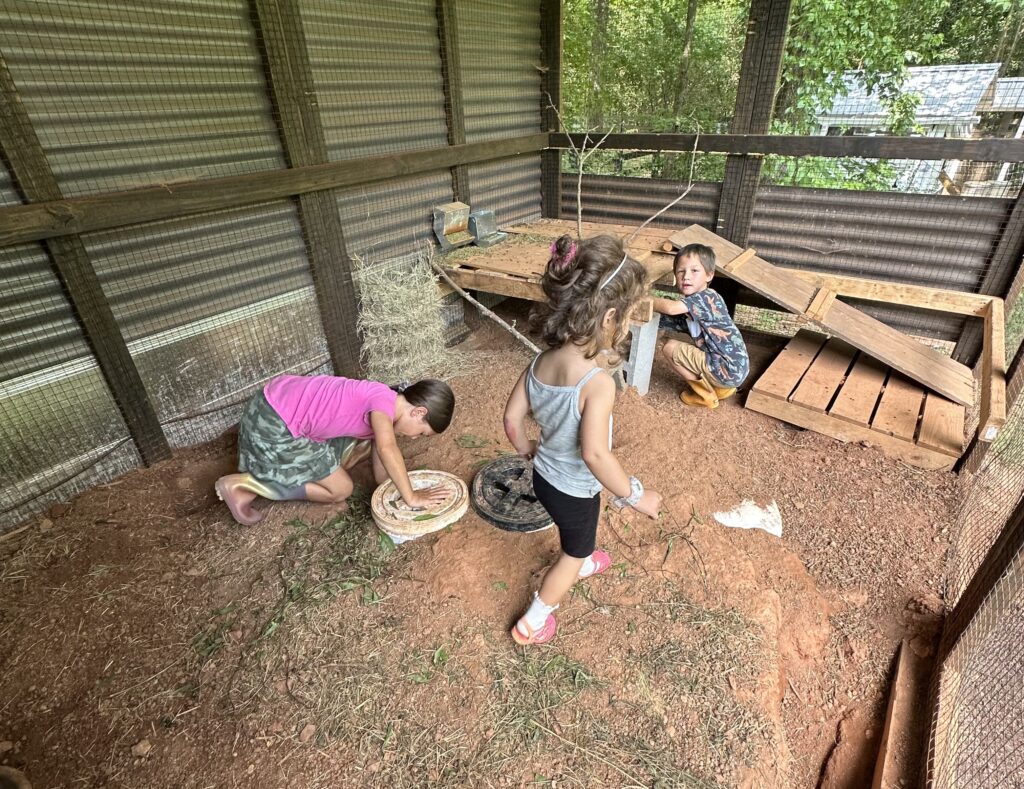
The next challenge in a colony setup is catching the rabbits — especially kits that are not used to human contact.
Our breeding trio is relatively easy to catch (especially the buck) because they’re used to us handling them. But it always takes our kids a couple of days to catch the kits and start interacting with them so they become more docile as they grow older (which is important in case they need to be medicated or separated).
We usually move the older kits (aka the grow outs) into a mobile rabbit tractor where they can enjoy fresh pasture for the last few weeks of their lives. By that time (usually around the time they turn eight weeks), they’ve been handled by the kids enough, and they’re easy to pick up.
Disease Control
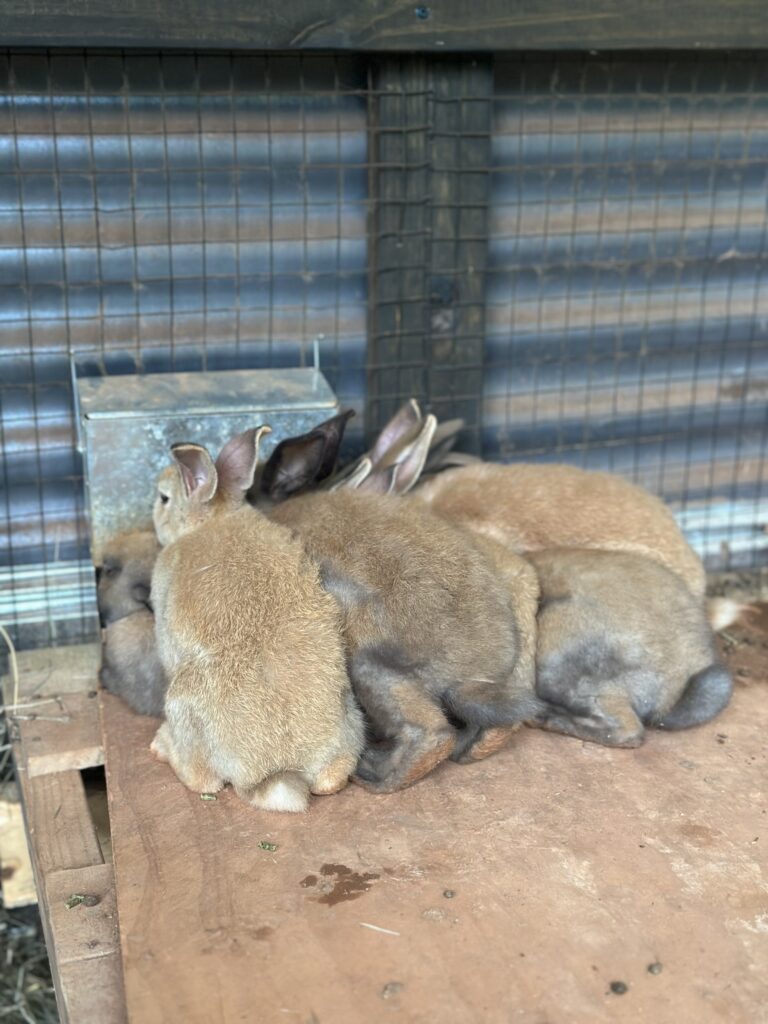
We’re convinced that rabbits that live in a colony enjoy better immunity than their caged cousins. However, if a contagious disease breaks out, it can quickly spread through your entire colony. We’ve never had any issues with diseases, but the risk remains.
Waste Control
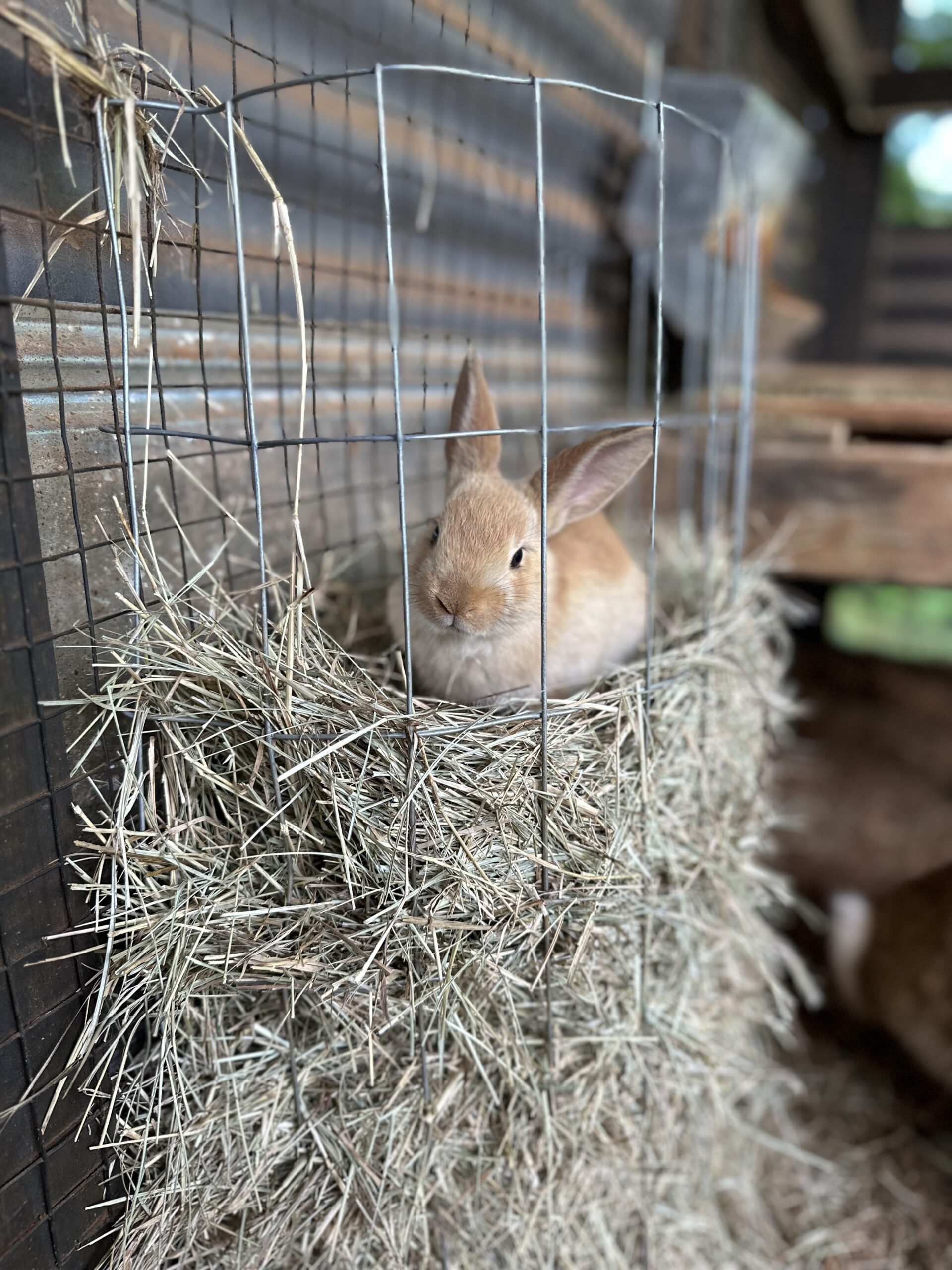
Cages with wire floors allow poop and urine to fall to the ground, where you can scoop it up without worrying about keeping the cages clean. A colony doesn’t usually have a wire floor, so you must figure out how to manage the rabbits’ waste.
A deep litter system is an excellent way to turn rabbit pellets and urine into compost, and maintaining it is effortless. We have a dirt floor in our colony, and while the soil absorbs the urine, we must shovel out the pellets occasionally. It’s not a significant effort, and they enrich our compost pile. But it’s a recurring task that adds to our chore list.
Tougher Meat
As we mentioned above, our colony rabbits get more exercise than their caged cousins. As a result, their meat is more flavorful but a bit tougher. However, since we butcher our rabbits when they reach 4.5 pounds, their meat is still relatively tender and comparable to chicken meat.
Frequently Asked Questions

As a rule of thumb, each buck needs approximately 10 square feet (1 square meter), and each doe (including her litter) requires 20 square feet (2 square meters) of floor space. Our rabbit hutch is 96 square feet (9 square meters), which provides more than enough room for one buck and two does with their litter. At peak time, we have 17 rabbits (three adults and 14 baby rabbits aged under eight weeks) in the colony.
Many first-time colony rabbit breeders are concerned that the buck might eat the baby bunnies. While cannibalism is possible with rabbits, it’s usually a sign of an underlying issue associated with their environment, such as crowding, predators or feed. We have not had any issues with our breeding buck, and we see baby bunnies from both does cuddling up to him regularly.
It’s in the rabbit’s nature to breed (hence the saying “breeding like rabbits”). Besides, a doe tells the buck when she isn’t ready to be bred. How do you think rabbits in nature handle that issue?
Feeding rabbits in a colony works like feeding caged rabbits. We feed them a combination of organic pellets, fresh greens, leaves and twigs from the garden, as well as hay. We also grow alfalfa, legumes and leafy greens in raised beds to feed our rabbits.
For freshwater supply, we use nipples and a bowl (instead of water bottles) connected to a 100-gallon rain barrel.
Additional Resources
Below are links to additional resources, including books and supplies we have found helpful for colony-raising rabbits.
- Raising Meat Rabbits in a Colony by Dana Thompson
- Raising Rabbits for Meat by Eric Rapp and Callene Rapp
You can find the two books above on Amazon. They helped us better understand what it takes to raise rabbits, as well as why raising them in a colony rather than cages was the better fit for us.
- Polyface Designs: A Comprehensive Construction Guide for Scalable Farming Infrastructure by Joel Salatin and Chris Slattery
We built our two mobile rabbit tractors using the design and cut lists from the book above. Since then, we’ve read several more of Salatin’s books on regenerative farming. In particular, I recommend Polyface Micro, because it makes many of the principles and ideas outlined in Polyface Designs compatible with a smaller homesteading scale.
We purchase all our rabbit and chicken feed from Modesto Milling, and the feeder linked above has been working great in both our rabbit hutch and the mobile rabbit tractors.
- Modesto Milling Organic Non-GMO Rabbit Food
- Pet Lodge Small Animal Feeder with Lid and Sifter Bottom
Final Thoughts on Raising Colony Rabbits vs. Caged Rabbits

Raising rabbits for meat is relatively easy, even if you don’t have a lot of land. In fact, you could raise colony rabbits in the backyard of your townhouse, considering that the animals don’t make any noise and don’t smell.
Raising colony rabbits is also not incredibly time-consuming. But even so, we prefer keeping daily chores to a minimum without sacrificing animal welfare.
Keeping rabbits happy in a colony setting is easy and requires little time and effort. However, to prevent the build-up of ammonia, to fertilize our lawn, and to keep feed costs down, we move the grow-outs to mobile rabbit tractors when they’re about three pounds (approximately at the eight-week mark).
Doing so ensures the remaining adult rabbits and the new baby bunnies have plenty of space above and below ground.
Have you considered raising rabbits (in a colony)? If so, let us know if you have any questions or concerns!
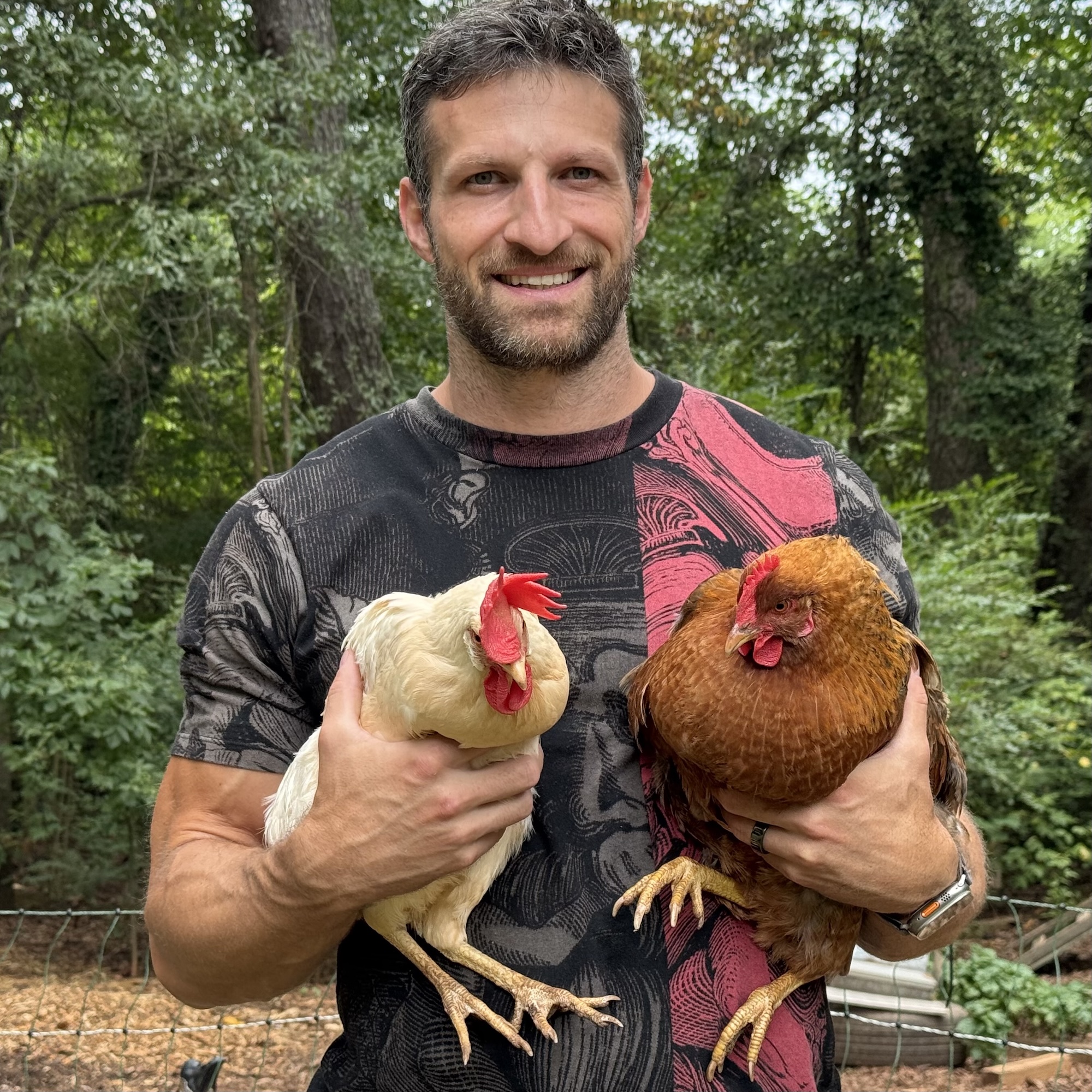
Michael Kummer is a healthy living enthusiast, the founder of MK Supplements and the host of the Primal Shift podcast. His goal is to help people achieve optimal health by bridging the gap between ancestral living and the demands of modern society. He runs the Kummer Homestead with his wife Kathy and their two children.
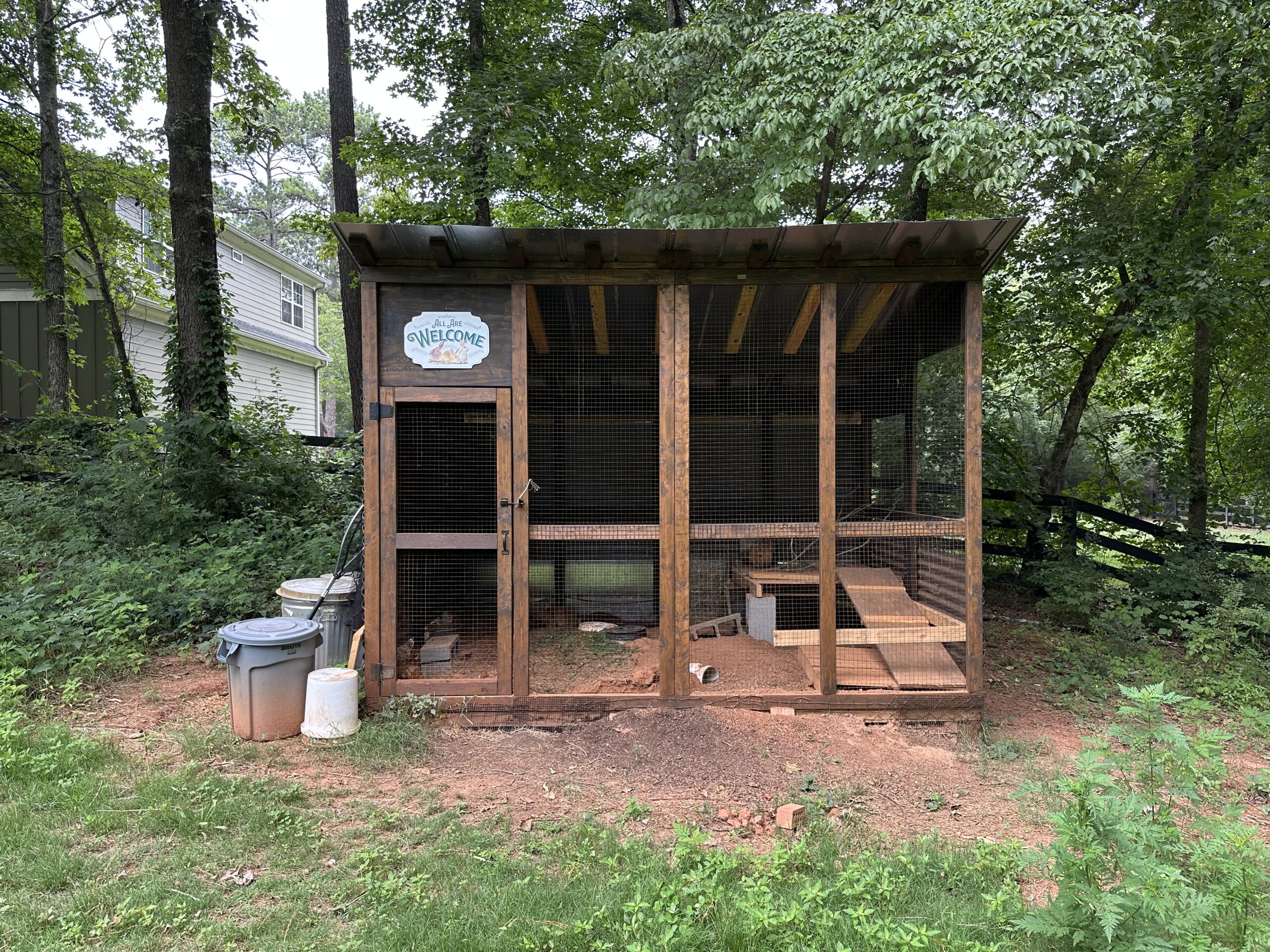
What kind of mesh cloth did you use underground? Size of squares? We are wanting to build something like this soon for our rabbits because the cages aren’t working for us. This seems far more ideal for our needs.
Apologies for the delayed reply. We used 2×3 for the first hutch and 1×1 for the second because we noticed that some kits would fit through the wider openings.
I’d love to see a video or blog post on how you finish raising your rabbits (from the time you move them into the tractor until you dispatch them). I think you said that you move them into the tractors at 8-10 weeks old. Does a whole litter fit in one of your tractors? Do they live in that tractor for the remaining 2-6 weeks of their lives, or what’s the timeline once they’re in the tractor? And do they only eat the grass from the yard or do you supplement with something? Really cool setup! Thanks
Hey Connor!
Thanks for stopping by! We have such a video on our roadmap and will publish it on the Kummer Homestead channel in the next few weeks. In the meantime, here is what we do: Once they reach 8-10 weeks of age (we actually go by their weight and how mature they look), we move them into a mobile rabbit tractor where they remain until it’s harvest time. The tractor is large enough to accommodate 8 rabbits. While they have access to fresh pasture, we still feed them pellets to make sure they grow as quickly as they can. How long they stay in the tractor depends on their weight. We usually butcher them when they reach 4.5 pounds.
I hope that helps until we have the video out 🙂
Cheers,
Michael
Do the young need to be fixed during their grow out period or are they processed before breeding begins? Is sexing difficult? Can you do grow out separately male female?
Hey Jerry,
nope, you don’t have to fix them. They get processed before reaching sexual maturity. Sexing is relatively easy but requires some practice by comparing what you see to pictures 🙂
Cheers,
Michael
Hello Michael,
Any chance you’ll post/sell the plans you used to build your above ground (post flood) rabbit colony? I really like the look of it. Enjoy ya’lls videos! Thanks!
We’ll do a separate video showing the measurements of the key components! Stay tuned!
Hello! I love the colony set up yall use for the rabbits! I am basing my design off of it because I live in SETX. My question is, after a doe kindles do you check the nests to remove any kits that are possibly dead? I was watching your video and it seems wonderful just to let the rabbits do their thing but was unsure of how to handle that one particular scenario. Thank you so much for your time!
Nope, we don’t mess with the nests because the rabbits have been taking care of moving dead kits out. We grab and dispose of them once they’re on the surface.
Hello! I have a question about kits.
How are stillborn kits, or ones that pass away early handled? I love the idea of everything maintaining itself but concerned about the health of the litter living with a dead kit? Does the doe remove it?
Thank you so much for your time and I am sorry if that is a silly question.
The does take care of keeping the nest clean!
Love the look of your post flood hutches, with just an individual or pair in each. I haven’t seen anyone else do something like this before and it seems like it would solve my issues with a colony style rabbitry. Record keeping is very important for me and I can’t let my rabbits have contact with wild rabbits on the ground as they have a high chance of carrying RHD2. I just have a couple of questions before I get to build my own.
1. What substrate do you use? The bulk of it looked like regular top soil or clay dirt but I couldn’t tell what was on the surface. Rice hulls or wood shavings or something? What do you think about using straw for this layer?
2. I’m in a pretty hot area and our temperatures on a July afternoon are usually 36 to 40 degrees (celsius), my rabbits are in a brick shed right now with a small AC unit and a fan. I don’t know how hot it gets where you are but how do you manage heat in these open air setups? Do burrows stay cold as they would in the ground or do they get warmer with only a layer of dirt between them and the wall of the hutch?
Thanks for your information!
We tried hemp bedding before but now use kiln-dried pine shavings. Straw isn’t ideal because it doesn’t absorb and mix with the soil well. Dirt is a pretty good insulator, so the burrows stay cool and comfortable in the heat.
Hi! How deep did you bury the mesh so they can still burrow? This is exactly the setup we want to do
Hey Sarah,
we buried the mesh wire three feet below the ground!
Cheers,
Michael
Hi there! I really enjoyed reading about your colony setup — it’s inspiring and very informative.
I was wondering if you might consider making a video specifically about your deep bedding method?
I’m especially curious about:
How you keep the colony clean with deep litter
How many times per week you do maintenance
Whether your rabbits tend to urinate in one area or all over
And how often you’d recommend cleaning for a setup with two rabbits and a nest of kits
It would be super helpful for others trying to build a natural and healthy rabbit environment. Thanks so much in advance!
Hi there! I really enjoyed reading about your colony setup — it’s inspiring and very informative.
I was wondering if you might consider making a video specifically about your deep bedding method?
I’m especially curious about:
How you keep the colony clean with deep litter
How many times per week you do maintenance
Whether your rabbits tend to urinate in one area or all over
And how often you’d recommend cleaning for a setup with two rabbits and a nest of kits
It would be super helpful for others trying to build a natural and healthy rabbit environment. Thanks so much in advance!
Hey Corneel,
thanks for the feedback and video topic suggestion! We’ll record a video on the subject and publish it on our YouTube channel. Stay tuned!
Cheers,
Michael